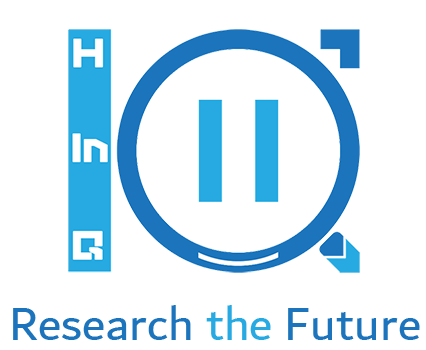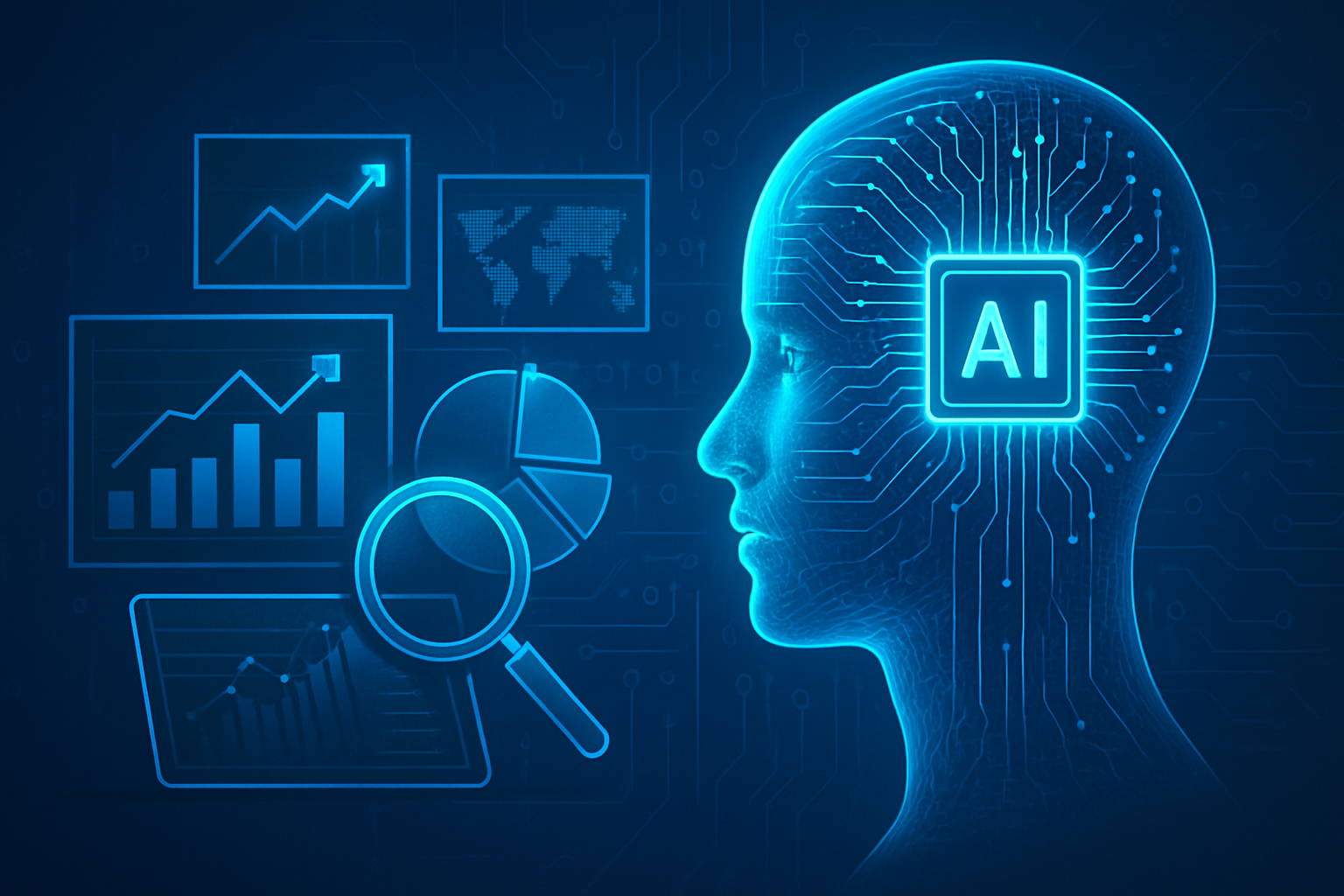Introduction – Decoded by Data: The AI Revolution in Market Research and Strategy
Market research has long been the cornerstone of business strategy. Focus groups, surveys, trend reports, and analyst briefings have guided decisions from product development to branding. But in a world defined by real-time shifts, volatile consumer behavior, and global competition, the old playbook is no longer enough.
Traditional research methods are struggling to keep pace. By the time a report is finalized, the market has often moved on. The volume, variety, and velocity of data now exceed what manual methods can meaningfully process. Enter artificial intelligence—not as a support tool, but as a new operating system for insight itself.
AI is changing what it means to understand the market. It’s parsing millions of data points from social media, e-commerce, search behavior, and customer feedback at speeds no team of analysts could match. It’s identifying patterns, predicting trends, and generating strategic foresight, not just historical summaries.
This is not an upgrade. It’s a redefinition. The role of market research is being rewritten—by algorithms that decode data in ways that were once unimaginable. What follows is an in-depth look at how AI is transforming research from a reporting function into a real-time strategic asset.
The Outdated Toolbox of Traditional Research
For decades, the tools of market research remained largely unchanged. Surveys, interviews, and focus groups offered structured but narrow views of consumer sentiment. Analysts combed through sales reports, compiled demographic data, and interpreted responses manually. These methods built billion-dollar insights, but they also came with critical flaws.
First, they are slow. From designing a questionnaire to collecting responses and analyzing results, traditional research can take weeks or even months. In today’s hyper-competitive environment, that delay is not just inefficient. It’s dangerous.
Second, they are limited in scope. Human-led methods can only handle so much data. A few hundred participants might shape a major strategic move, even though billions of real-world behaviors and sentiments go unexamined.
Third, they are often biased. From poorly framed questions to groupthink in focus groups, human error can skew data before analysis even begins. And the static nature of these tools means they struggle to adapt when markets shift overnight.
These limitations aren’t just technical. They are strategic. Businesses that rely solely on outdated methods are flying blind in a data-saturated world. The demands of modern markets require not just more information, but smarter interpretation. That’s where AI is stepping in to change the game.
AI Is Rewriting the Rules of Market Intelligence
Artificial intelligence is not just a tool for faster data processing. It is redefining the fundamentals of how market insight is generated. At the core of this transformation is the ability of AI to go beyond static snapshots and deliver dynamic, real-time intelligence that evolves as the market does.
Machine learning models digest vast amounts of structured and unstructured data from multiple sources—online reviews, social media sentiment, e-commerce activity, call center transcripts, even satellite imagery. Natural language processing (NLP) enables AI to interpret consumer language across platforms, detect emerging themes, and flag anomalies with minimal human input.
What once required teams of analysts now happens in seconds. AI detects correlations and causations that human researchers might miss entirely. It surfaces insights not only faster but often with greater accuracy, reducing the guesswork that has traditionally plagued strategic planning.
This level of automation does not replace human judgment. It amplifies it. Researchers now spend less time on data wrangling and more time on interpretation and strategic synthesis. AI is enabling a shift from backward-looking reports to forward-leaning foresight. It’s not just changing how research is conducted. It’s redefining what research can do.
From Reactive Reports to Predictive Precision
Traditional market research often delivers insight after the fact, what happened, why it happened, and how customers felt once it was already over. But AI flips this model on its head. It enables companies to move from reactive interpretation to predictive foresight, reshaping how strategy is built and executed.
With predictive analytics, companies no longer wait for trends to emerge. They anticipate them. AI models trained on historical and real-time data can forecast everything from consumer demand shifts to emerging competitors, regional sentiment swings, or evolving customer preferences. The value isn’t just speed. It’s timing. Strategic moves can now be made before opportunities are lost or threats materialize.
Retailers use AI to anticipate product demand by combining sales data with online behavior and social buzz. Media companies refine content based on predictive engagement models. B2B firms analyze customer signals to forecast churn or upsell readiness. The edge lies not in reacting quickly, but in preparing ahead of the curve.
In this environment, data becomes a living asset. Forecasts adjust in real time. Scenarios can be modeled in seconds. And the margin for error, long accepted in market research, begins to shrink. Precision, not probability, is becoming the new standard for competitive intelligence.
Proof in the Patterns: How AI is Powering Real-World Research
AI-driven market research is no longer experimental. It’s embedded in the workflows of leading organizations across industries. From fast-moving consumer goods to financial services, companies are applying AI to decode behavior, uncover unmet needs, and drive smarter decisions.
One global cosmetics brand uses AI to scan millions of social media posts and product reviews in multiple languages, extracting real-time sentiment and identifying trends long before traditional reports surface them. This intelligence informs everything from product development to influencer partnerships.
In the automotive sector, a manufacturer uses machine learning to analyze dealership feedback, customer support transcripts, and test drive behavior. The system detects dissatisfaction patterns early, flagging both product issues and missed sales opportunities, reducing lead loss and improving customer retention.
Meanwhile, a financial services firm combines chatbot transcripts, transaction metadata, and CRM history to train AI models that predict customer life changes, marriage, new home, career shifts, allowing for timely, hyper-personalized offerings.
These examples are not marketing stories. They’re operational reality. AI is doing more than identifying what customers think. It’s revealing how they behave, what they value, and where the market is heading. The accuracy, depth, and immediacy of these insights mark a new era of business intelligence fueled not by assumption, but by evidence.
The Rise of the Augmented Analyst
The rise of AI in market research is not about replacement. It’s about elevation. As algorithms take on the heavy lifting of data processing, human analysts are stepping into more strategic roles. They are not becoming obsolete. They are becoming augmented.
Today’s analysts are asked to do more than summarize trends. They must synthesize insights, challenge assumptions, and guide executive decisions. With AI, they gain tools that enhance pattern recognition, eliminate manual biases, and surface variables that would otherwise remain invisible. The result is faster, smarter, and more informed strategy development.
This new model of augmented intelligence redefines the skillset of the modern market researcher. Technical fluency becomes as important as interpretive skill. Cross-functional collaboration is essential. Data storytelling moves from dashboards to boardrooms, as insights drive not just recommendations but transformation.
The companies that win won’t be the ones with the most data. They’ll be the ones with the clearest understanding of what that data means. In this landscape, the synergy between human intuition and machine precision is not a luxury. It’s a necessity.
Market research isn’t dying. It’s evolving into something more powerful, an always-on, AI-enhanced strategic engine that drives decisions at the speed of change.
What is AI market research?
It’s the use of AI to analyze consumer opinions, behaviors, and patterns—turning raw conversations, surveys, and data into actionable insights.
How does Converse-in-Q support market research?
Converse-in-Q is a conversational AI that engages users in natural dialogue, detects sentiment, and provides instant dashboards for concept tests, brand equity, and segmentation.
How does BuzzPulse-in-Q help track e-reputation?
It monitors online chatter, social media, and forums to detect sentiment shifts, identify crisis signals, and guide brand positioning with real-time analytics.
Can AI replace traditional focus groups?
Not fully, but HiVox-in-Q offers online focus group automation, making qualitative research scalable, faster, and richer in behavioral insights.
How reliable are AI models in market research?
Our models are trained on multilingual datasets and validated against real-world studies, ensuring robust accuracy in both qualitative and quantitative research.
Do FMCG companies use AI market research?
Yes—FMCGs are the largest investors in consumer research. They use our AI solutions for product testing, advertising evaluation, segmentation, and equity tracking.
Ressources :
- Unlocking the next frontier of personalized marketing – McKinsey
- Many Surveys, Small Impact – Forrester
- How gen AI can take customer personalization to the next level – McKinsey
- AI Can Save Bad CX, but Not How You Expect – Destination CRM
- https://h-in-q.com/analytics/



